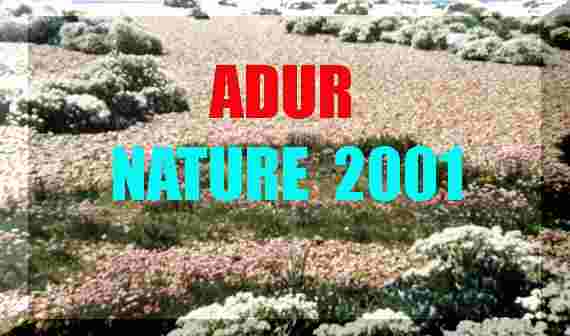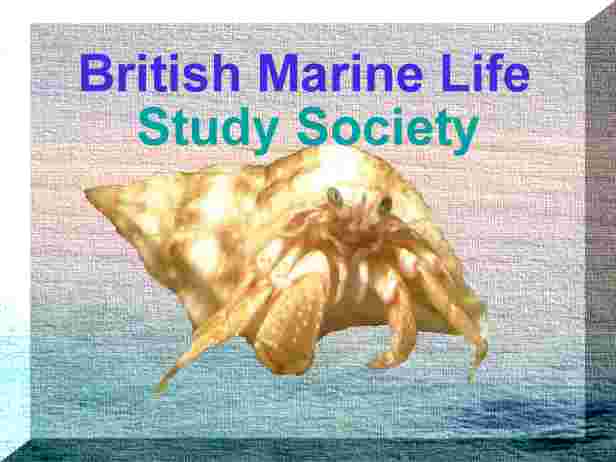
|
NEWS BULLETIN FOR THE ADUR VALLEY |
| LOCAL
ORGANISATIONS |
| LOCAL RESIDENTS PAGE |
| Adur Flood Plain |
| Chalk Downs |
| Coastal Fringe |
| Intertidal (Seashore) |
| Nature
Notes for
Lancing Ring |
| River Adur Estuary |
| River Adur |
| Sea (off Sussex) |
| Town & Gardens |
| Widewater Lagoon |
| AREA MAP |
| Shermanbury (Adur Valley) |
|
|
|
|
|
|
|
|
|
|
|
|
|
|
|
|
|
|
|
|
|
|
|
|
|
|
|
|
|
|
|
|
|
|
|
|
|
|
|
|
|
|
|
|
|
|
|
|
|
|
|
|
|
|
|
|
|
|
|
|
|
|
|
|
|
|
|
|
|
|
|
|
|
|
| 55 | 56 | 57 |
| 58 |
|
|
| 61 |
|
|
|
|
|
|
|
|
|
|
| 70 | 71 | 72 |
This is the first published
Electronic Newspaper for
Shoreham-by-Sea and the
Adur Valley & District, West Sussex, England
Local NewsMarlipin's Museum
Planning Application: SU219/01/TP
South Downs National Park : Proposed Area
http://www.countryside.gov.uk/reception/papers/SDmap1.htm
Old Boundaries:
http://www.countryside.gov.uk/reception/papers/Areaofsearchmap.jpgClick on the URL for the complete map
Please send any comments to: Andy Horton
Glaucus@hotmail.com
Wildlife Notes
WINTER Nature Notes 2001 JANUARY - MARCH SPRING Nature Notes 2001 APRIL - JUNE SUMMER Nature Notes 2001 JULY - SEPTEMBER AUTUMN Nature Notes 2001 OCTOBER - DECEMBER 5 October 2001
Lancing Ring
I walked through woodland area via the grass meadow which was cut back in mid August, somewhat prematurely by contractors and without advance notice being given to the FOLR. It appears the task was originally to remove the flower heads of Ragwort which by then had already begun to set seed but it was cut a second time removing the flowers of Knapweed (Hardtop) and Wild Carrot.
The damage to butterfly caterpillars is not clear at present.Lots of small, some familiar some unidentified birds chattered and chirped
in the bushes.
Shiny clusters of almost ebony black Privet, Ligustrum vulgare, berries stand out on the tops of the drab looking bushes.
Among the Ash and Beech woodland, shafts of sunlight penetrate through the canopy to the shady floor, making strong patterns of bright light.
With the changing light different features of the woodland are highlighted.
Today I noticed that a particular Beech Tree appears to have facial features
formed on it's trunk when viewed from one side.
The eye is formed by a large hollow knot hole, the nose a bulbous lump and
the mouth a crease in the bark.
The combined features form a face that appears to have a look of wisdom and
knowledge of the life in the wood, unseen by human kind.Fungi
The autumn fungi have begun to appear but not in great number.
Puffballs like smooth golf balls have appeared in their usual place. A few
Golden Pholiota have appeared clinging to decaying Ash tree wood.
The Parasols a not very evident but one has bravely appeared in grass a few
yards from the dewpond.
It did appear that some Parasols had emerged and been beheaded for no good reason.
They are not toxic so they pose no threat to child or canine.Report by Ray Hamblett
5 October 2001
The conkers on the Horse Chestnut Tree are just about ready for the kids, if they still play conkers. The conker scanned in was from the tree on the south side of the road opposite Lancing Manor.The high tides and rain had filled Widewater Lagoon which looked spectacularly red with the red variety of Glasswort in abundance, part submerged and partly still exposed west of the bridge. At the eastern end a Little Egret fished in the shallows, probably for the 3-spined Stickleback.
Butterflies at Shermanbury as well as the plentiful Red Admirals, there was one Speckled Wood and a Painted Lady.
4 October 2001Report by Allen Pollard
A Small Tortoiseshell Butterfly in immaculate condition was seen on the Adur Levels near where the caterpillars were discovered (see below).
Muted
colours of the River Adur north of Old
Shoreham
on
an autumn equinoctial low spring tide, 2001
3 October 2001
With the sunshine pleasant after a a few rain storms and near gales, there were Red Admiral Butterflies on the ivy bushes, notably on the old railway track between Old Shoreham and Ropetackle.
On the Adur Levels next to the Steyning Road (TQ 208 068) there were scores (20+) of medium-sized blue-patterned dragonflies hawking between the reeds and waterside vegetation by the stream. It was difficult to get close enough to identify these colourful insects, but they were smaller than the Emperor Dragonfly, Anax imperator, (which may have been mistaken for these in the past). They remained at two metres above the stream for most of the time, but they were rapid flyers and chased each other over the reeds on occasions. However, they did not appear to be strongly territorial and the chases were for mating purposes. Some of them, if not all, had an abdomen tinged with brown. The thorax was brown and not marked with green. My identification of these is the Migrant Hawker, Aeshna mixta.
There were other (12+) smaller brown-red dragonflies around as well, possibly Common Darters, Sympetrum striolatum, but they seemed smaller.Biology of the Migrant Hawker
British Dragonfly Society Species Checklist
UK-Dragonflies Discussion Group
UK Dragonflies Messages on flight times
Dragonflies of the Hampshire & Surrey Borders
Dragonfly Flight Times (First Seen)
Freshwater Life of North-western Europe Smart Group
About a hundred black caterpillars covered the leaves of a couple of low growing Stinging Nettle plants (TQ 209 068). These are the caterpillars of the Small Tortoiseshell Butterfly. There are the beginnings of a silk web over the top of the nettle leaves.
What is the Caterpillar web page
Small Tortoiseshell Caterpillar (pic)
Life Cycle of a Butterfly (Caterpillar stage)
At Shermanbury, Allen Pollard reported a Comma Butterfly.2 October 2001
Red Admiral Butterflies are still around, Dave Mason saw one in Ship Street, Shoreham town centre, despite the near gales and Allen Pollard reported these attractive butterflies at Shermanbury some 14 miles up the Adur, north of Old Shoreham. He also reported that Red Admirals were numerous on the old railway line path between Henfield and Partridge Green where at least one Speckled Wood Butterfly was seen.
Allen Pollard's Then & Now web pages
Butterfly Guide Index
Adur Butterflies
Lancing Nature & History - October 2001 Newsletter
Lancing Ring Photographic Gallery for July
Poem or LiteratureLast verse of Song of Praise to West Sussex
Oh, land that holds my heart in fee,
Where'er my feet may roam,
Dear land of down and weald and sea,
I hear you call me home.
Never the south wind sings and sighs,
But the voice of your woods will fill
The mean and empty leagues between,
And my heart grows fain for the things unseen,
For coombe and hurst and Sussex skies
And the breast of a Sussex hill.A.F.Bell.
from "Sussex Verse"
supplied by Ray Hamblett
- Wildlife
Web Sites
Dragonflies of the Hampshire & Surrey Borders
Find
the Sites of Special Scientific Interest using this link:
Friends
of the Earth SSSI Navigator
Shoreham High Street circa 1972
Brief History of Shoreham-by-Sea
- Words
of the Week
hurst | hst | n. Also hirst. [OE hyrst f. base repr. also by OS, OHG hurst, (also mod.G) horst.] I 1 A hillock, knoll, or bank, esp. a sandy one. OE. b A sandbank; a ford formed by a bed of sand or shingle. LME. 2 A wooded hillock or rise; a copse, a wood. OE. II 3 The frame of a pair of millstones. L16.
(NB:
hyrst could be cognate with the Welsh prys = brushwood.)
PS:
This is a suggestion by one of the philologists. I think this is unlikely
because hyrst is frequently found in place names in Sussex (e.g.
Ashurst, Midhurst) where Celtic names are not recorded and in the south
we have the OE word strod for brushwood which is the origin of Stroud.
---------------------------------------------------------
Excerpted
from The Oxford Interactive Encyclopedia
Developed
by The Learning Company, Inc. Copyright (c) 1997 TLC Properties Inc.
Photographic GallerySt. Nicolas Church, Old Shoreham silhouetted at Sunset
Study by Neil Mudd (October 2001)
- Star: Latest Virus Information
Computing
Net Support Site
(for computing problems) ****
http://computing.net/windows95/wwwboard/wwwboard.html
The upsurge of EFora
on all subjects (a
few have been recommended before in these bulletins) are an important way
in which the Internet
will change the world.
A list of recommended eFora
are shown in the left hand column. Please make any suggestions.
See the Profusion Search method below.
SHOREHAM AIRPORT NEWS
Archaeology in Sussex to AD 1500 ****
WSCC
LIBRARY *****
Excellent
and essential service with a full catalogue of books, CDs, videos,
on-line renewals, book ordering.
- The
Glaucus 2000 CD-ROM includes the complete Shoreham-by-Sea
and Adur Valley web sites, as well as shareware
and free programs

ADUR VALLEY EFORUM PAGE |
Events
- Adur
On-line Events page
- http://appspace.nexus-solutions.net/arc/asp/diary/diaryoutput.asp
- Please send in any details of local events.
- Web
Sites
American
Heritage Dictionary of the English Language:
Fourth
Edition *****
- SPONSORSHIP OPPORTUNITY
For any company or organisation wanting nationwide green publicity, there is an opportunity to sponsor the journal "Glaucus" of the British Marine Life Study Society.
There remains sponsorship opportunities on the BMLSS (England) web site and other publications, including Torpedo.
Sponsorship is also available for the Adur Torpedo Electronic News Bulletin and the Shoreham-by-Sea web pages (which preceded the Adur Resource Centre web site), which would be more suitable for a local firm(s).
Web Site Design Services are available from Hulkesmouth Publishing
Normal
advertisement rules apply.
Submissions
accepted by EMail only.
| 55 | Adur World Oceans Day Committee Meeting |
| 56 | Ropetackle - Group Consultation with SEEDA |
| 57 | Train Crash at Lancing |
| 58 | Ropetackle Outline Plan Initial Comments |
| 59 | Plane Crash at Sharpthorne |
| 60 | Foot & Mouth Disease Restrictions |
| 61 | Repair of the Old Fort |
| 62 | Plane Crash at Shoreham |
| 63 | HMS Shoreham |
| 64 | Foot & Mouth Disease Restrictions Update |
| 65 | Adur Festival 2001 Preview |
| 66 | Ropetackle Outline Plan - Objections |
| 67 | Shoreham May Day Celebrations |
| 68 | Ropetackle Outline Plans - Plan |
| 69 | Plane Crash at Lancing |
| 70 | Foot & Mouth Disease Restrictions Lifted - Footpaths Open |
| 71 | Escape of King Charles II Exhibition |
| 72 | Adur World Oceans Day Preview |
| 73 | Adur World Oceans Day |
| 74 | General Election |
| 75 | End of the Adur Festival |
| 76 | Plane
Crash Averted at Lancing
Conservative Independent Alliance |
| 77 | Farmer's Market |
| 78 | Ropetackle Public Meeting |
| 79 | Ropetackle Planning Meeting Reminder |
| 80 | Ropetackle Planning Meeting Report |
| 81 | |
| 82 | Shoreham
Air Show
350th Anniversary of the Battle of Worcester |
| 83 | |
| 84 | |
| 85 | Closure
of the Marlipins
Widewater Information Booth |
| 86 | Round the World by Helicopter |
Adur
Torpedo was written, designed and distributed by Andy
Horton.







